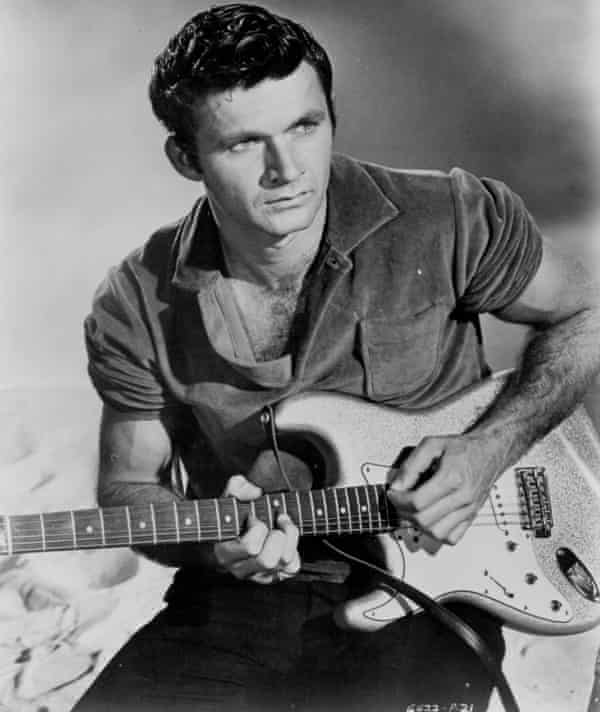In this episode of the Buster Mungus Diaries I take a look at 4 of my favourite live recordings of all-time.
The albums are fabulous in their own right, but they do provide a glimpse at musicians/bands when the material is paired with great engineering and a fantastic performance. Consider the variety and range of performances by the likes of, Jerry Lee Lewis, The MC5, Deep Purple and the Allman brothers Band.
I grew up during the decade of the live album. As an Artist you were nobody until you had a live album in late 1960s into the late 1970s. It announced your triumphs over the previous album releases and marked your maturity as an artist, usually with a multi gate fold, poster sometimes included, double LP.
Jerry Lee Lewis
Jerry Lee Lewis (born September 29, 1935) is an American rock and roll and country music singer and pianist. An early pioneer of rock and roll music, Lewis was inducted into the Rock and Roll Hall of Fame in 1986 and his pioneering contribution to the genre has been recognized by the Rockabilly Hall of Fame. In 2004, Rolling Stone Magazine ranked him number 24 on their list of the 100 Greatest Artists of All Time.
The MC5
MC5 was an American rock band from Lincoln Park, Michigan, formed in 1964. The original band line-up consisted of vocalist Rob Tyner, guitarists Wayne Kramer and Fred "Sonic" Smith, bassist Michael Davis, and drummer Dennis Thompson. MC5 was listed by VH1 as one of the most important American hard rock groups of their era. Their three albums are regarded by many as classics, and their song "Kick Out the Jams" is widely covered.
Someone in the studio (with the initials W.K.) got tired of watching "KOTJ" being taught incorrectly on YouTube. So, on a challenge, that same complainer taught our "resident youth" William Olivas to play it correctly. If William can do it, anyone can. And now you can, too. Finally! Now, once more, with feeling...
Deep Purple
While Deep Purple have been copied and imitated by many artists and bands throughout the years, none have captured the essence and feel of the Mark II lineup.
| Mark IIa (July 1969 – June 1973) |
|
|---|
This lineup is considered the "Gold Standard" among longtime fans of the band. The Mark II produced two of the 1970s greatest albums, "Machine Head" and our pick, "Made in Japan"
The Allman Brothers Band
While some of the greatest live performances during a bands history are never recorded on audio tape of film, sometimes we get lucky and find the next best the next best thing. Most of the early film of the band live is either from super 8 film of just plain horrible quality due to low light levels, there are a few worth watching. In this clip 1971, Duane and Dicky illustrate their guitar prowess without walking over each other. Moreover Dickey hasn't yet entered his "I'll play as loudly as I want to" phase so there is some noted restraint while playing in the shadow of the great Duane Allman.
In this episode we take a look at the history of one of the most recognized and widely covered surf songs -- Misirlou.
Dick Dale
Taken from the film "A Swingin Affair" released in 1963. The band also performs another tune in the film but its not as good.
Spliced together from clips taken from the movie "Pulp Fiction" this version is sonically the same, simply using the originally recorded studio track and setting it to the film clips.
We trace the song from its origin as a middle eastern folk song in the 1920's through to its re-invention as a modern day surf classic from Dick Dale, to its impact on cinema goers as the theme song for Quentin Tarantino's 1994 film Pulp Fiction.
Learn to Play Misirlou
In this short clip you'll learn the basics of how to play the classic on the electric guitar.
In this Misirlou guitar lesson, I will show you to play this Dick Dale classic note-for-note.
We will be using standard tuning. The most obvious technique used by Dick Dale throughout "Misirlou" is the rapid fire tremolo picking. In order to accomplish this and also make the guitar tone brighter, he chose to pick very close to the bridge.
Picking very close to the bridge makes the string feel tighter, which in turn can make it a bit easier to rapidly pick the string.
You will need a lot of endurance to make it through the entire song. The most important thing to remember is to try and keep your right hand wrist and forearm as relaxed as possible. That is very difficult to do because the picking is almost non-stop. "Misirlou" is a great exercise in staying relaxed during fast picking passages.
There is also a short chord section where the guitar takes a rhythm guitar approach underneath a trumpet solo. I will show you the chords used during this section of the song and it gives a chance for you to relax your picking hand a bit.
So I hope you enjoy learning this surf rock guitar workout!
Carl...











Social Media
Search Here